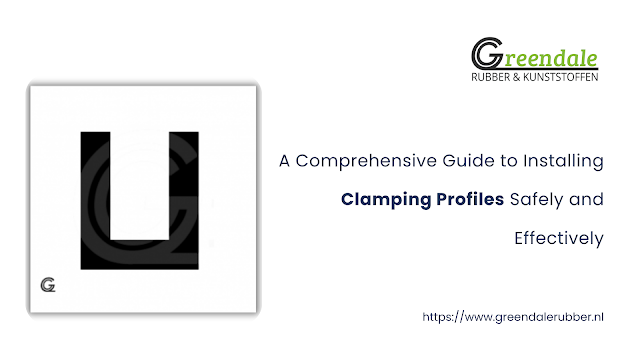Safe and secure installation of these clamping profiles is not just about the proper fitting it affects the overall lifespan and safety of the equipment these are used on. A poorly installed profile can lead to leaks and mechanical damage. That is why it is important to choose the right profile for your needs to reduce the risk of further inconveniences.
There is a plethora of types available to choose for consumers to buy clamping profiles online in the Netherlands. Each type is unique with its own properties. So, what are the types of clamping profiles available? The most common clamping profile types are rubber, PVC and silicone. Let's analyse these in depth to effectively choose the right one.
Types of Clamping Profiles
Rubber clamping profiles are favoured for their flexibility and resistance. The two most sought-after rubber clamping profiles are made out of EPDM and NBR. EPDM is known for its excellent weather resistance. These are used widely in the automotive and electrical industries. Whereas NBR clamping profiles ensure a long-lasting seal and excel in oil and chemical resistance. These are significantly used in construction and manufacturing industries.
PVC clamping profiles are broadly used in domestic settings. For lightweight panels and interior sealing, these are quite beneficial. These are also available in several colour options which makes these a convenient option as well.
Silicone clamping profiles are suitable for high-temperature environments. These are non-toxic and are suitable for industries such as medical, food and beverages etc.
Considering the wide array of alternatives, businesses and homeowners should buy clamping profiles online while being prepared beforehand. How about getting a detailed step-by-step guide to safely install clamping profiles?
Step 1.
Select the Right Profile: Choose a clamping profile according to your specific operational need. Be it a rubber clamping profile or a silicone one, ensure you select the desired option to avoid further disturbance. Check for the temperature range while purchasing clamping profiles online in the Netherlands.
Step 2.
Prepare the surface: Ensure the surface where the clamping profile will be installed is clean and dry. Check for any prior steps to be done if instructed by the manufacturer.
Step 3.
Proper Placement: Start by pushing the clamping profile gently into place. Avoid stretching too much as profiles can shrink back over time. Trim down any excess material if rubber or silicone profiles are concerned.
Step 4.
Ensure a Secure Seal: After installation check for any leaks and if needed tighten the clamping profiles a little bit. For a wet environment, go for waterproof sealants to avoid leakage.
Step 5.
Consult User Manual: To avoid any complex juncture, reach out to the user manual. Thoroughly follow the instructions provided there as clamping profiles might require specific installation techniques.
Note: Some necessary precautions such as wearing masks, gloves, face-shields can be taken while installing clamping profiles to enhance safety and efficiency. Avoid using the wrong tools to perform the installation as well.
Clamping profiles may appear tiny in size but these are a vital component in many industries. Understanding the types and how to install clamping profiles while purchasing online in the Netherlands can improve reliability and ensure long-term investment. By following simple and easy steps from choosing the right rubber profile to final installation, you can get your clamping profiles put in place safely. With the convenience of digital marketplaces, look for professional help online when needed to get the best help.

Comments
Post a Comment